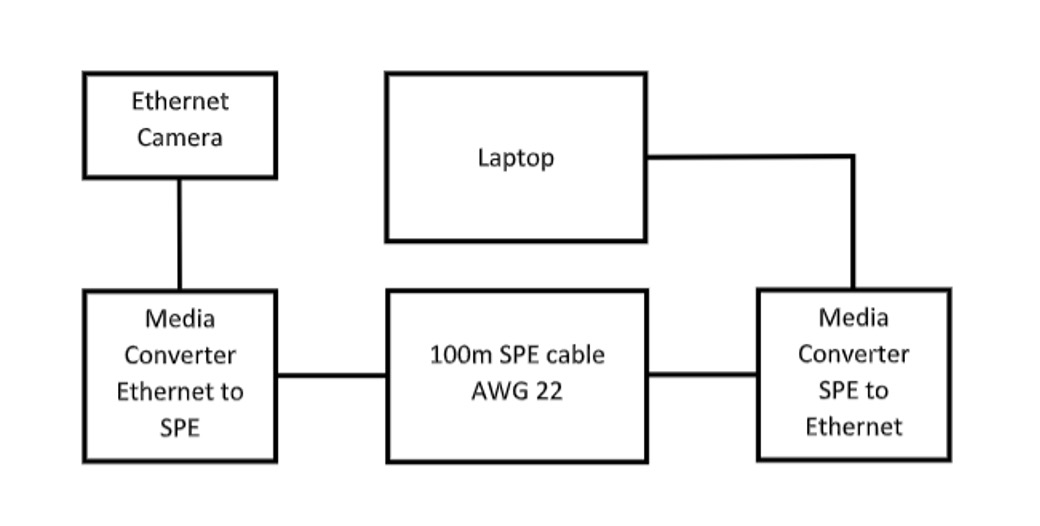The ability to seamlessly transport data between hardware at the edge (such as IoT nodes) and the cloud will significantly shorten the period in which responses can be made. However, the ability to achieve this has been hindered by how far IP-based communication can extend into industrial infrastructure, since edge-located hardware has relied on different protocols than the Ethernet cabling deployed throughout the rest of the network. As the following article will explain, through the implementation of Single Pair Ethernet (SPE), there is now the prospect of true end-to-end communication protocol compatibility.
The Emergence of SPE
Let’s look at the actual benefits that are being derived. Basically, it has enabled a rationalization of Ethernet technology. As a consequence, new opportunities have opened up for Ethernet to be incorporated across a wide range of different sectors where resource limitations had previously held it back. Outside the industrial domain, SPE has also gained huge traction in automotive designs and building automation applications.
What distinguishes SPE from conventional Ethernet is that, instead of having multiple conductor pairs, it is able to transmit data across a single conductor pair – even when there are relatively large distances involved. By reducing the number of conductors required, SPE cabling is much better suited to constrained application settings. It takes up less space (as it has thinner cable diameters associated with it) and weighs less than its multi-conductor pair counterparts too. Since it is more streamlined, SPE also proves very straightforward to implement. Installations are less costly, they are completed within shorter timeframes, and there is less chance of set-up errors occurring. Also, when being installed, the cable thinness allows it to handle more severe bending.
Vital in enabling SPE to support full-duplex data transmission, despite its smaller number of conductors, is the echo cancelling mechanism applied. It is via this that signals can simultaneously travel in opposite directions without their overall integrity being compromised.
SPE’s Progression
The first SPE standard specification to be published was IEEE 802.3bw, which covered 100Mbps data rate full-duplex point-to-point communication over cables of 15m length. Further specifications followed on from this, such as IEEE 802.3bp-2016 – which ramped up data rates across 15m to 1Gbps. Through this, data-heavy video-based tasks such as machine vision are now being addressed.
Next came IEEE 802.3cg-2019, which features two separate PHY specifications. Supporting 10Mbps speeds over 1km distances is 10BASE-T1L. Emulating Power over Ethernet (PoE), Power over Data Line (PoDL) is an additional aspect of SPE. Much like PoE does with conventional Ethernet, this allows electrical current and data signals to be simultaneously transferred across the same twisted conductor pair. Among the benefits of this are space savings and reduced upfront costs. When a powered device is connected, the serial communication classification protocol carries out negotiation. Then it can confirm the power classes from 0.5W up to 52W.
Defining an SPE Future
The prospect of Ethernet packets flowing between edge-based equipment and the cloud represents a real game-changer, enabling industrial automation systems to become far more responsive, cost-effective and adaptable. New specifications are set to be introduced in the years ahead. Among these will be longer range (500m) 100Base T1 and 1000Base T1 capabilities, which are expected in early 2024.
SPE in Action
At this year’s embedded world trade show (in Nuremberg, Germany on March 14-16) – on Stand 3A-125 – EBV Elektronik will have an SPE demonstration for visitors to observe. This will feature Ethernet PHYs from two different suppliers to underline interoperability. Data being transmitted across the cable will conform with the 100BASE-T1 SPE protocol.

Situated at one end of the cable will be an Auto-Link-SPE-M 100BASE-T1 media converter from i-novative (based on Broadcom’s BCM89811 PHY), with accompanying Control Centre software, plus cable diagnostics. At the other end of the cable there will be a media converter from Microchip (using the company’s LAN8770 PHY). Also incorporated into the demo will be a LAN camera (for supplying the video data) and a laptop for displaying the transmitted visual content. The cabling will be provided by EBV’s sister company Avnet Abacus (via supply partner TE Connectivity), with a transformer (from Bourns) helping to maintain superior signal integrity.
 Karl Lehnhoff, Industrial, Scientific, and Medical Segment Director at EBV, will give an overview of their available PHYs and switches for industrial use at embedded world – 11:00 am on March 15th at the Exhibitor Forum in Hall 3.
Karl Lehnhoff, Industrial, Scientific, and Medical Segment Director at EBV, will give an overview of their available PHYs and switches for industrial use at embedded world – 11:00 am on March 15th at the Exhibitor Forum in Hall 3.
